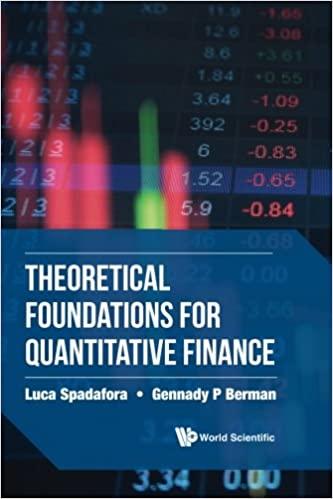Answered step by step
Verified Expert Solution
Question
1 Approved Answer
Questions 33 - 36 are based on the Nathalie and Phillipe Bouchard Case Study Nathalie and Phillipe Bouchard have been married for 35 years. Nathalie
 Questions 33 - 36 are based on the Nathalie and Phillipe Bouchard Case Study Nathalie and Phillipe Bouchard have been married for 35 years. Nathalie is 60 years old; Phillipe is 62 years old. Both individuals immigrated to Canada from Belgium 37 years ago. Nathalie works in the human resources department of a large accounting firm and earns $47,500. Phillipe is a high school principal and earns $85,000 (his net income for this year is $70,000). The couple has two adult children: Andre and Celeste. Celeste is married to Justin; together they have a son named Marcel who just celebrated his first birthday in February of this year. Justin has had an offer to relocate to the U.S. If he and Celeste accept the move, it will mean a significant increase in his income. Nathalie and Phillipe are extremely supportive of their children and actively involved in their lives. In particular, they happily provide care for Marcel while his parents are working. Both Nathalie and Phillipe intend to continue working until they attain age 65. At that time, each individual will apply for CPP and OAS benefits and in addition, they will both receive pension benefits from their respective employers: Nathalie will receive approximately $18,000 per year; Phillipe will receive approximately $40,000 per year. Nathalie and Phillipe have always been disciplined savers and as such have accumulated a significant net worth. They own a principal residence as joint tenants currently valued at $850,000. Ten years ago, Nathalie inherited a cottage valued at $360,000 from her family--the property is registered in her name only. Phillipe has an RRSP valued at $425,000. Nathalie is the annuitant under an individual RRSP valued at $170,000 as well as a spousal RRSP currently worth $250,000. The couple also has $390,000 in a joint investment account. Nathalie and Phillipe have not yet established TFSAs however, it is likely they will do so using some of the savings in their chequing account. Out of the $25,000 currently in their joint chequing account, Nathalie and Phillipe would like to withdraw $15,000 for investment purposes. Strictly from a tax perspective on their immediate situation, what option would be LEAST desirable for Nathalie and Phillipe? a) use the entire $15,000 to purchase additional bonds in their joint investment account b) maximize contributions to their respective TFSAs and then, contribute the balance to their RRSPs c) maximize their RRSP contributions and then, contribute the balance to their respective TFSAS d) maximize contributions to their respective TFSAs and then, contribute the balance to their joint, investment account
Questions 33 - 36 are based on the Nathalie and Phillipe Bouchard Case Study Nathalie and Phillipe Bouchard have been married for 35 years. Nathalie is 60 years old; Phillipe is 62 years old. Both individuals immigrated to Canada from Belgium 37 years ago. Nathalie works in the human resources department of a large accounting firm and earns $47,500. Phillipe is a high school principal and earns $85,000 (his net income for this year is $70,000). The couple has two adult children: Andre and Celeste. Celeste is married to Justin; together they have a son named Marcel who just celebrated his first birthday in February of this year. Justin has had an offer to relocate to the U.S. If he and Celeste accept the move, it will mean a significant increase in his income. Nathalie and Phillipe are extremely supportive of their children and actively involved in their lives. In particular, they happily provide care for Marcel while his parents are working. Both Nathalie and Phillipe intend to continue working until they attain age 65. At that time, each individual will apply for CPP and OAS benefits and in addition, they will both receive pension benefits from their respective employers: Nathalie will receive approximately $18,000 per year; Phillipe will receive approximately $40,000 per year. Nathalie and Phillipe have always been disciplined savers and as such have accumulated a significant net worth. They own a principal residence as joint tenants currently valued at $850,000. Ten years ago, Nathalie inherited a cottage valued at $360,000 from her family--the property is registered in her name only. Phillipe has an RRSP valued at $425,000. Nathalie is the annuitant under an individual RRSP valued at $170,000 as well as a spousal RRSP currently worth $250,000. The couple also has $390,000 in a joint investment account. Nathalie and Phillipe have not yet established TFSAs however, it is likely they will do so using some of the savings in their chequing account. Out of the $25,000 currently in their joint chequing account, Nathalie and Phillipe would like to withdraw $15,000 for investment purposes. Strictly from a tax perspective on their immediate situation, what option would be LEAST desirable for Nathalie and Phillipe? a) use the entire $15,000 to purchase additional bonds in their joint investment account b) maximize contributions to their respective TFSAs and then, contribute the balance to their RRSPs c) maximize their RRSP contributions and then, contribute the balance to their respective TFSAS d) maximize contributions to their respective TFSAs and then, contribute the balance to their joint, investment account

Step by Step Solution
There are 3 Steps involved in it
Step: 1

Get Instant Access to Expert-Tailored Solutions
See step-by-step solutions with expert insights and AI powered tools for academic success
Step: 2

Step: 3

Ace Your Homework with AI
Get the answers you need in no time with our AI-driven, step-by-step assistance
Get Started


